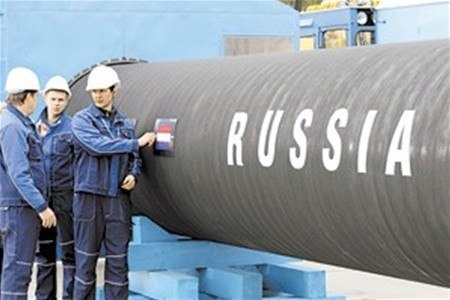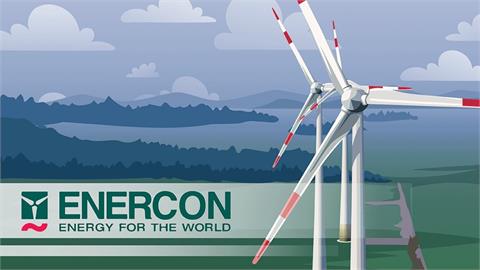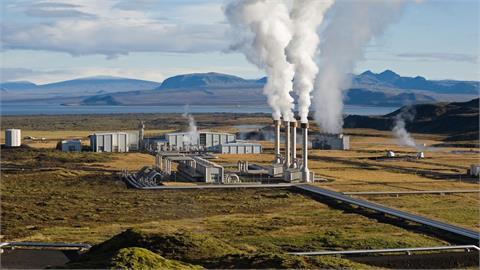by Chi Kong Chyong* After the annexation of Crimea in March 2014, three other regions in eastern Ukraine (Kharkiv, Donetsk, and Luhansk) have demanded a referendum on secession from Ukraine by 11 May. All four regions are crucial to the country’s economic development.
After the annexation of Crimea in March 2014, three other regions in eastern Ukraine (Kharkiv, Donetsk, and Luhansk) have demanded a referendum on secession from Ukraine by 11 May. All four regions are crucial to the country’s economic development. Together, they account for one-third of total export receipts and generate a quarter of Ukraine’s GDP. The current political situation has created even more doubts on the future of energy in Ukraine, which rests heavily on the tense gas relations between Russia and Ukraine.
Getting Russian gas to Europe
The dissolution of the Soviet Union fundamentally changed the system of Russian gas exports to Europe. It created major problems in the gas trade for Russia, for the republics of the former Soviet Union, and for Russia’s European customers.
Firstly, the Soviet-era single pipeline system was split and brought under the control of the newly independent states. Ukraine emerged as the single most important transit country for Russian gas exports to Europe. Between 1991 and 2000, 93 percent (106bcm per year) of Russian gas exports went through Ukraine.
The collapse of the Soviet Union caused economic hardship in the former Soviet states. This caused a cycle of non-payment of debt for Russian gas, which led to constant haggling between Russia and Ukraine over debt settlement, prices, and transit fees. Disputes began as early as 1992, and their continued recurrence put European gas supplies at risk. When Russia and Ukraine clashed again in January 2009, it brought about the worst disruption in gas transit since the beginning of Russian gas exports to Europe.
To escape this bottleneck, Russia has been working to diversify its gas exports to Europe by building pipelines that can bypass Ukraine. It began construction on a large export pipeline through Belarus and Poland to Germany in 1994, and the line reached full capacity in 2006. A direct subsea line to Turkey was operationalised in 2003. More recently, the Nord Stream pipeline under the Baltic Sea came online in 2011, connecting Russia directly with Germany. As a result of these projects, by January 2014, Ukraine carried only 49 percent of Russian gas exports to Europe.
Clinging to the transit monopoly
Russia has been successful in reducing its reliance on Ukraine as a transit country. But Ukraine’s dependence on Russian gas has remained high: 60 percent of Ukraine’s gas supply comes from Russian imports. Ukraine tends to see its transit monopoly as an important bargaining chip in negotiations with Russia and believes that it acts a deterrent to higher import prices. In a recent survey, 60 percent of Ukrainians said they would not hand over their strategic pipelines to Russia even if it meant lower gas prices. But in fact, as Russia’s reliance on Ukraine as a transit country lessens, the "value” of these pipelines to Russia has dropped dramatically. After the completion of the South Stream bypass pipeline, set to be opened in 2018, the value of the Ukrainian pipelines will be close to zero.
However, Ukrainians seem fixed on the idea of having a transit monopoly along with cheap gas. After the 2006 gas dispute with Russia, Ukrainians were asked how they thought their country should react to Russia’s threat to cut off Ukraine’s gas supplies. Thirty-five percent of respondents argued that Ukraine should increase transit fees in response to an increase in Russian gas prices. Twenty percent said that Ukraine should aim to recover the old barter arrangement with Russia that saw low transit fees offered in exchange for low gas prices. Eleven percent argued for handing over transit pipelines to Russia in exchange for lower prices. Four percent believed that Ukraine should siphon off gas intended for European consumers. Three percent wanted to shut down all Ukraine’s transit pipelines. In 2008, Ukraine’s national gas company, Naftogaz, tried to set a transit fee for Russian gas of $9 per tcm/100km. This was three times more than the fee charged by Slovakia and Poland and twice as much as the fee charged by most West European countries.
The role of gas in Ukraine’s economy and politics
It is not surprising that Ukraine is just as dependent on Russian gas now as it was 20 years ago: it sees no point in restructuring its energy sector. The relatively low gas prices that it paid until 2009 have made its economy grossly energy inefficient. Ukraine’s economy is roughly three times more energy intensive than that of Poland or the United States. Even Russia is 25 percent more energy efficient than Ukraine.
The metal and chemical industries in eastern and southern Ukraine consume about 16bcm of gas per year, roughly half of Ukraine’s total gas imports from Russia. These two sectors form the cornerstone of Ukraine’s economy: together, they generate 42 percent of GDP and 48 percent of all export receipts. In contrast, total transit receipts come to just under 2 percent of GDP, most of which goes into maintaining the activities of the transit pipelines. Therefore, lower import prices are more important to Ukraine’s economy than the advantages that come from transporting Russian gas. For this reason, Ukrainian politicians, backed by the oligarchs who own the metal and chemical plants, have bargained with Russia for low import prices in exchange for keeping gas transit fees low and most importantly secure.
Therefore, the "east-west” political divide in Ukraine is not only a matter of cultural factors such as language and ethnicity. These differences are underscored by Russian gas, which has a powerful impact on the economic and political choices of Ukraine’s regions and the country’s domestic politics. For example, when Yuliya Tymoshenko signed the 2009 gas deal with Russia that caused import gas prices to skyrocket, she did so in part because it imposed higher economic costs on the eastern and southern industrial regions, where her opponent, Viktor Yanukovych, had most electoral support. In response, when Viktor Yanukovych came to power in 2010, his administration signed with Russia the so-called "Kharkiv Accords” whereby the Russian lease on naval facilities in Crimea would be extended to 2042 in exchange for a multiyear discount on the import price of Russian gas for Ukraine.
But the situation is improving, and it has the potential to improve still more. Domestic gas consumption has fallen since the first price spike of Russian gas in 2006. As a result, in 2013, the combined gas consumption of district heating and households was roughly equivalent to Ukraine’s domestic gas production, which is four times cheaper than Russian gas. There is even greater potential for savings in the energy inefficient metal and chemical industries. The chemical industry has improved its energy efficiency by 25 percent since 2006 and could in theory reduce consumption by another 25 percent.
The annexation of Crimea and the future of gas in Ukraine
The annexation of Crimea and the possible secession of the eastern regions from Ukraine could have serious consequences for Ukraine’s economy and energy situation.
The east and the south together have around 640bcm or 93 percent of Ukraine’s known remaining conventional gas reserves. This is equivalent to roughly 11 years of total gas consumption or 30 years of district heating and household gas consumption. And these two regions are the locations of 90 percent of all prospective gas resources. Even if only 40 percent of all these resources proved to be technically and economically viable, Ukraine could be self-sufficient in gas consumption for at least 30 years.
Ukraine also has vast resources of shale gas, which could make the country gas independent for at least 75 years. Most of these deposits are in the eastern, southern, and western regions. If the east seceded, Ukraine would lose a substantial part of its shale deposits. At the same time, it would lose its existing gas production infrastructure, which would make it far more difficult to develop shale gas elsewhere in the country.
What should the Europe do?
Without its eastern regions, Ukraine would become even more dependent on Russian gas. This would pose a threat to Europe’s gas security. A very short-term fix for Europe would be to prepare itself for transit disruption using whatever means possible. This could include commissioning gas-fired power and heating plants to have fuel back ups. Also, Europe should focus on working with the Ukrainian government to start reverse gas flow from Slovakia. This would ensure that in gas disputes with Russia, Ukraine could receive gas from the West, rather than being driven to take gas meant for European consumers.
In the long run, Europe must convince Ukraine to adopt a strategic and coherent gas policy. Ukraine needs to forget about holding onto its transit pipelines at all costs, and instead, to negotiate with Russia and Europe over the joint management of its pipelines. This would decrease the economic value to Russia of the proposed South Stream project. Europe should actually support Russia’s bypass pipelines, as a way to force Ukraine to reform its gas sector and seek alternative sources of supplies, including shale gas. Europe should encourage Ukraine to change its political rhetoric on gas. Instead of viewing pipelines as a strategic weapon, Ukraine’s leaders should focus on reforming and liberalising the energy sector so as to eliminate the political power of Russian gas in Ukraine.
* Director of Energy Policy Forum and ECFR Visiting Fellow
(European Council on Foreign Relations, ecfr.eu, April 16, 2014)




